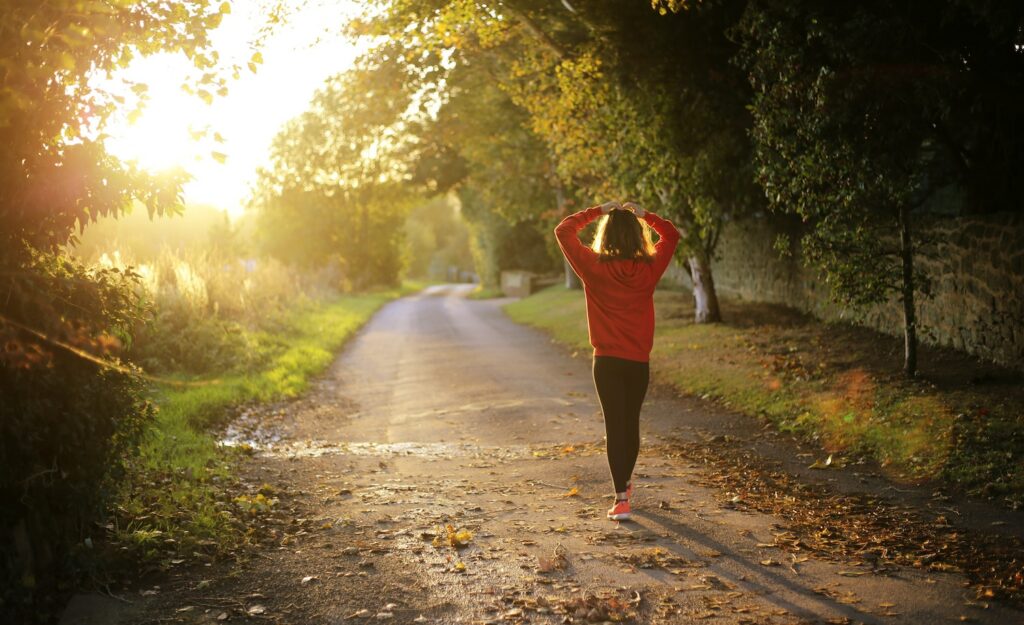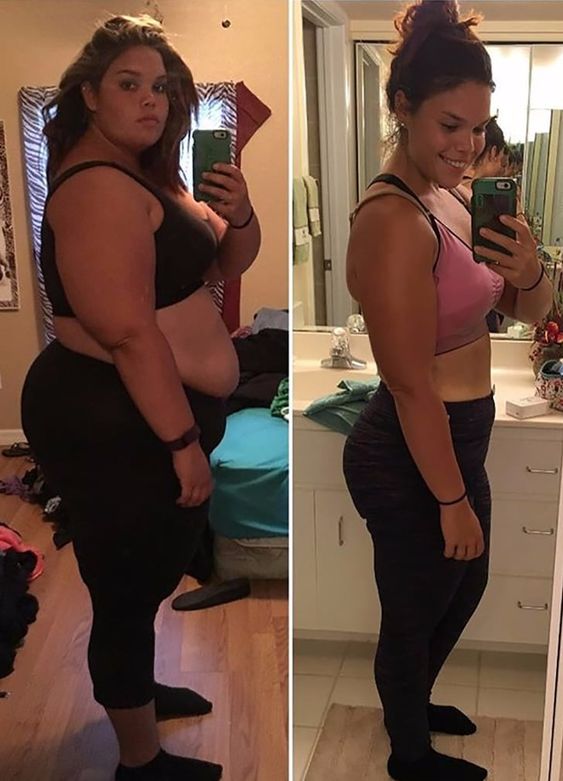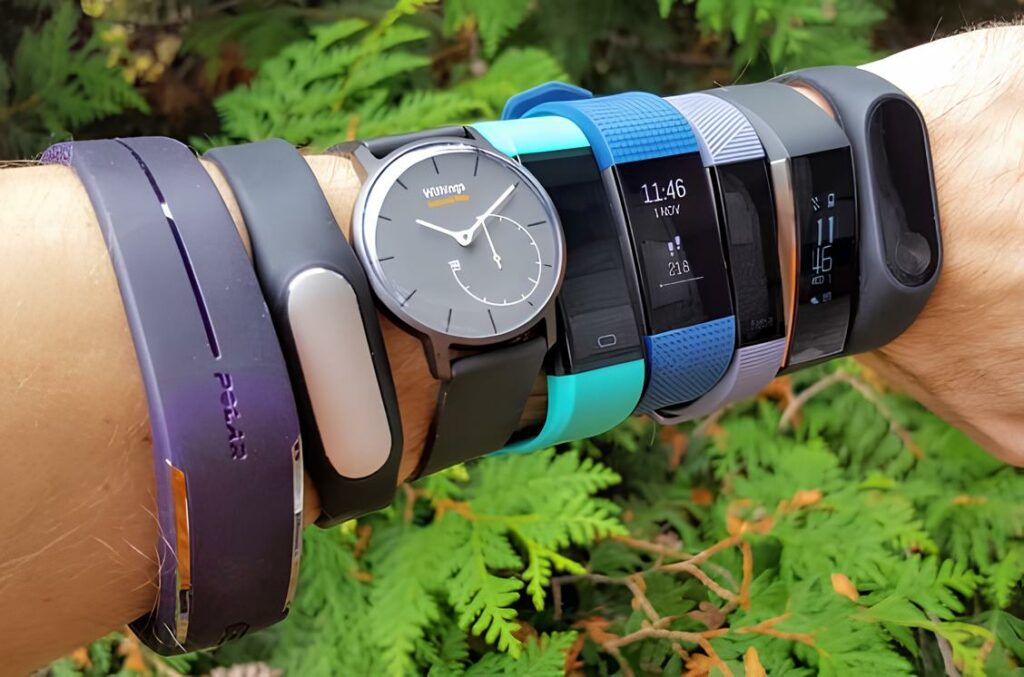Every nerd should have one key pieces of knowledge:
How many calories do I burn while walking a mile?
In this article, Personal Trainer Etobicoke are addressing of this question and more.
Walking is an excellent exercise, and it’s frequently a recommendation for individuals beginning our coaching program. Many success stories within our community, like Tracy’s, credit a consistent walking routine for maintaining their weight loss journey.
Here’s what we’re going to discuss:
- What are the benefits of walking?
- How walking can change your life.
- How to walk properly.
- Is walking enough for weight loss?
- The best practices for walking (tips and tricks).
- Is a Fitbit helpful for walking? (Which fitness tracker is best for me?)
What Are The Benefits of Walking?

Walking is inherent to our human design, deeply ingrained in our DNA, and played a significant role in our ascent as the dominant species on Earth (alongside opposable thumbs, large brains, and Nintendo).
Let’s cover the basics:
The CDC recommends walking approximately five miles a day or 10,000 steps. That’s why the default step goal on your Fitbit is set at 10,000.
Regrettably, the average American falls significantly short, managing only half that distance: 2.5 miles or 5,000 steps.
It’s likely that those with active outdoor jobs or physically demanding roles significantly boost this average.
However, for desk-bound individuals like us, the reality is quite the opposite. We tend to walk far less.

We often rely on our feet to take us from the front door to the car, then to our desks, back to the car, and finally back to our front door—ultimately landing on our couch, where we spend four hours watching TV before bedtime.
Insufficient walking can contribute significantly to gradual weight gain over the years.
You might have questions like:
- Can walking more help me lose weight?
- Is walking truly beneficial for my health?
- Do I need to engage in more intense workouts?
In a nutshell…
HERE’S WHY WALKING IS VITAL:
- 1) Calorie Burn with Ease: Walking burns calories without causing excessive fatigue. If you walk the recommended distance each day (5 miles instead of 2.5), it can lead to significant weight loss over time. Walking just one more mile each day burns an additional 100 calories. When multiplied, that’s an extra 700 calories burned per week, resulting in roughly a pound of fat lost every five weeks or 10 pounds in a year. You can adjust your distances to achieve your desired results!
- 2) Manageable Training Stress: Walking doesn’t add to training stress. Intense workouts like weight training or running can lead to burnout, breakdowns, and injuries. If you aspire to achieve a superhero physique, additional cardio or long-distance sessions might hinder your progress. However, walking can be a game-changer. As long as you’ve gradually built up your body’s physical capacity, you can cover great distances without feeling overly tired or sore. Walking, especially outdoors while soaking up sunlight, can actually boost your well-being.
- 3) Low-Impact Activity: Walking is low-impact, unlike running, which can strain joints, especially if done incorrectly or by those who are significantly overweight. If your feet or joints hurt after a walk, you may need to adjust your technique – we’ll cover this in the next section!
- 4) Fat-Burning Potential: Because walking is low-intensity and low-impact, your body doesn’t need to tap into glycogen and glucose stores for fuel, as it does during strength training or high-intensity cardio. Advocates of intermittent fasting propose walking in a fasted state in the morning before eating anything, as it may help burn additional fat. While this is somewhat controversial, it’s worth trying and measuring the effects for yourself.
- 5) Stress Relief: Indeed! Throw on your favorite playlist and take a delightful stroll around your neighborhood or through the woods as the sun sets. It’s a recipe for leaving behind the stresses of your day.
- 6) Enhancing Mental Well-being: Walking has a positive impact on mental health, especially among older hobbits. Engaging in regular walks can enhance mental well-being, stimulate brain growth, boost memory, and is associated with longer, healthier lifespans.
How Walking Can Change Your Life

If you’re struggling with severe weight and intense workouts like running or strength training are not feasible, keep walking.
If you’re in the process of building muscle and aiming for a bulked-up physique, continue to walk.
If weight loss is your goal and you’re on a journey towards shedding those extra pounds, walking should be a constant.
For those finding it challenging to stick to a routine or have faced setbacks in weight loss attempts, embrace walking.
Why? I am a strong advocate of incremental changes and celebrating small victories, and walking is the ideal foundation for forming habits. If you’re just starting out, take a walk today and commence your expedition to Mordor.
Later today, allocate five minutes for a walk. Tomorrow morning, even before you start your day, put on your shoes as soon as you wake up, go outside, and indulge in a five-minute walk. No hitting the snooze button, lingering in bed, or checking emails or Twitter. Pop in your earphones, select your favorite tune, step outside, and embark on that walk.
HERE’S HOW WALKING CAN TRANSFORM YOUR LIFE:
- Walking for merely five minutes daily marks the inception of a new habit. In the initial weeks, you might need to push yourself to walk every morning. At the outset, opting for a walk over hitting snooze will require conscious effort and determination. However, as days go by and you achieve this small victory repeatedly, the effort and willpower required diminish. It’s just five minutes, after all, right? Once it becomes second nature, add to it by extending your walking time.
- Brisk walking in the fresh morning air can serve as an excellent caffeine-free wake-up call! Making walking the first activity of your day, especially when the world is still asleep, ensures zero distractions and no excuse for claiming “I didn’t have time.” Of course, we appreciate caffeine too (in moderation).
- Walking offers an opportunity to gather your thoughts and declutter your mind before the hustle and bustle of the day. Our homes are filled with distractions: TV, iPads, smartphones, and more. Walking is primal – no gadgets, just walking. Many attribute their creative or intellectual breakthroughs to walking.
- Successfully incorporating walking into your routine and forming a habit provides a blueprint for other accomplishments you aspire to achieve. You’ll find yourself saying, “Hey, I made walking a habit, what else can I conquer in the same manner?” Slow and steady progress triumphs. One step at a time, my friend.
How to Walk Properly
If your daily walk consists of just moving from your car to the office, it’s essential to ensure you’re walking correctly, especially if you plan to increase your mileage.
Let’s begin with your feet, assuming you’re not about to become a hobbit by gluing hair to your feet and going barefoot.
I suggest opting for shoes with a wide toe box and minimal drop (difference in height between the heel and toes), as detailed in our comprehensive guide on healthy feet and footwear:
- Choose low-profile shoes like those from Vivo Barefoot.
- Personally, I trained in Vibrams for years.
- Currently, I’m training in Merrell Vapor Glove 3s.
If you’re not accustomed to walking with minimal cushioning under your heels, start by walking slowly and landing softly. Starting on softer surfaces isn’t a bad idea either.
Considering we were designed before the invention of big, clunky shoes, we should be able to walk without them. If you’re interested in transitioning to barefoot running, begin by walking short distances. Your feet will toughen up (though they probably won’t sprout hair like Frodo and Sam), the muscles around your feet, ankles, and joints will strengthen, and your knees will experience less stress.
During a leisurely stroll, focus on landing softly. This is easier without thick-soled shoes to cushion your stride. Land softly, allowing your heel to barely touch before rolling onto the middle (ball) of your foot, and then push off. If you were accustomed to long strides with a significant heel strike, you might need to shorten your strides.
If your goal is a brisk walk with increased intensity, shorten your stride and aim to land in the middle of your foot while pumping your arms. This is more achievable when walking uphill, which is also an excellent way to burn additional calories.
Is Walking Enough for Weight Loss?

Can walking aid in weight loss? Absolutely!
The photos above showcase Tracy, one of our coaching clients, who attributes his remarkable 85-pound weight loss to his daily walking routine!
She, walks daily to maintain her weight loss.
Is this conclusive proof? Not quite!
It’s essential to note that Tracy made adjustment to their nutrition to achieve their incredible results.
One of the fundamental principles of the Personal trainer Etobicoke is understanding that “you can’t outrun your fork.” No amount of exercise can compensate for a poor diet, given that your nutrition significantly contributes to about 90% (not an exaggeration) of your success or failure.
Here’s a scenario to illustrate this:
- Let’s say you embark on a 5-mile walk, taking over 90 minutes to complete.
- However, if you follow this up by consuming a 20 oz Gatorade and a small bag of Fritos (a typical snack for many in America), you would have essentially negated all the calories burned during your walk.
This situation might be either uplifting or disheartening, depending on your nutritional habits and feelings towards exercise.
The downbeat aspect: You can’t indulge in unhealthy eating and still expect to lose weight with sporadic exercise, even if it’s intense.
The positive aspect: Even if you’re not fond of exercise, you can forgo it and still shed pounds! Shift your complete focus to improving your nutrition and occasionally go for a walk.
For more guidance, consider delving into the following resources:
- The Beginner’s Guide to Healthy Eating
- The 5 Rules of Weight Loss
Additionally, if you’re interested in discovering whether a Personal Trainer Etobicoke Fitness Coach can devise a weight loss program for you involving enjoyable activities like walking, click on the link.
The Best Practices for Walking (Tips and Tricks)
HERE’S HOW TO ENHANCE YOUR WALKING TECHNIQUE:
- Prioritize posture! Keep your head up and shoulders back. Stride with confidence – practice this, especially in the morning if it’s new to you. Not only does it instantly boost your confidence, but it’s beneficial for us nerds and hobbits who could use a confidence boost! Maintain a gaze on your surroundings with your head held high, and let your arms swing in a rhythmic manner. You can also incorporate well-placed neck swings and remove your jacket for added mobility.
- Opt for uphill walks to increase fat burn. If you’re using a treadmill, set it at an incline to intensify your workout and enhance fat burning. Maintain good posture, lean into the incline, shorten your stride, and engage your legs while avoiding the common mistake of leaning back to align with the incline.
- Hiking is an excellent way to refine your walking skills, relish the beauty of nature, and perhaps indulge in some Lord of the Rings playtime in the woods with plastic swords and capes. Not that we’re suggesting you should (but you totally should). Here’s a beginner’s guide to hiking!
- When descending, especially if you’re barefoot or wearing minimalist shoes, adopt a short stride and be cautious about your walking technique. Ensure your knee is bent when you land to absorb the impact, rather than directing the force through your heel, knee, leg, hips, and lower back.
- Consider engaging in “fasted walks” in the morning. Early in the morning, your body has largely depleted its carbohydrate-fueled energy stores during the night. As a result, when you embark on a morning walk, your body is more likely to tap into its primary fuel source: fat! This principle underlines approaches like Intermittent Fasting or very low-carb diets like the Ketogenic diet.
- Equip yourself with a robust walking stick – not just for practicality, but to engage in imaginary battles against ogres, goblins, cavetrolls, and so on. It can also infuse a sense of adventure into your walk, aiding in uphill climbs and gentle descents.
- Experiment with Temptation Bundling. Load up an audiobook or your favorite podcast, and condition yourself to only indulge while walking. This not only makes your walk entertaining but also allows for productive use of your listening time.
Is a Fitbit Helpful for Walking? (Which Fitness Tracker Is Best for Me?)

If you’re someone who’s interested or becoming interested in walking, chances are you’ve come across step-tracking devices such as:
- Fitbit (the Charge 4 model is particularly impressive)
- Garmin
- Apple Watch
- Polar
Personally, I’m a strong advocate for fitness wearables, but not necessarily for the reasons you might expect.
First and foremost, these devices serve as a constant reminder that you’re making movement a priority, and this can only have a positive impact. You can even set reminders to prompt you to stand up and move every hour.
Our Fitbit trackers, for example, can assist us in analyzing trends and reaching our step goals. They provide insights into our regular step count, enabling us to focus on increasing our activity.
While Fitbit has faced lawsuits regarding the accuracy of its heart rate monitoring, my main concern isn’t about heart rates or achieving 100% precision in step distances. I view these devices more as tools for personal improvement.
Much like tracking body fat percentage or weight, “what you measure, you can improve,” and this applies to the total steps you take. Simply tracking it means you’ll become more conscious of your activity levels, motivating you to strive for improvement.
That’s why I’m not overly fixated on the absolute accuracy of these gadgets. Even if your scale is slightly off or your body fat caliper isn’t entirely precise, using the same device consistently under the same conditions allows you to track trends and gain insights into your overall health and progress.
Fitness trackers should be utilized as reminders and trend trackers.
What you SHOULD NOT do: Rely on your fitness tracker as an absolute truth and use it to meticulously calculate your calorie and macro intake.
What you SHOULD do: Track your trends over time and aim to enhance your average. Leverage technology to support your fitness journey. Engage with the community aspect of these devices to compare your statistics with friends and benefit from positive peer pressure to stay active.
Alright, if nerdy fitness technology isn’t nerdy enough for you, let’s take it to the next level of nerdiness.

